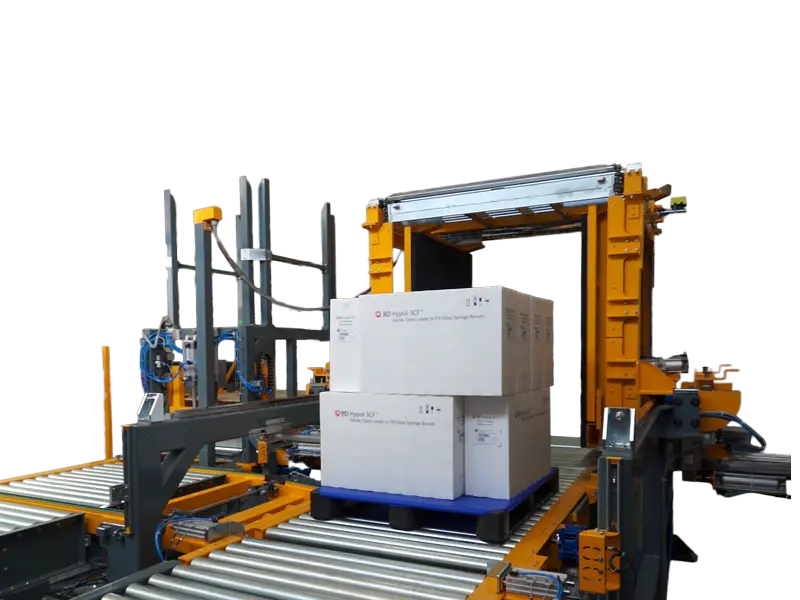Top Reasons Argentina Industries Choose Pallet Inverters for Lower Downtime in Agri-Export Processing Plants
Are you constantly battling logistical headaches in your export operations? In the fast-paced world of Argentinian agri-exports, any delay or product damage at the final stage can wipe out your profits. You have high-value goods, ready for international markets, but the final step of getting them onto the right, compliant pallet is slow, risky, and labor-intensive. This creates a major bottleneck, increases the risk of workplace injuries, and puts your shipments in danger of being rejected by strict international customs. It's a frustrating problem that turns a potential profit center into a source of constant stress and financial loss.
Argentinian agri-export industries choose pallet inverters for one primary reason: to drastically reduce downtime and its associated costs. These machines directly address the biggest challenges in export logistics by automating the pallet exchange process. This automation minimizes product damage from manual handling, eliminates delays caused by slow manual labor, ensures compliance with international pallet standards like ISPM 15, and speeds up the entire throughput of the processing plant. It is a single investment that solves multiple critical problems at the end of the production line.
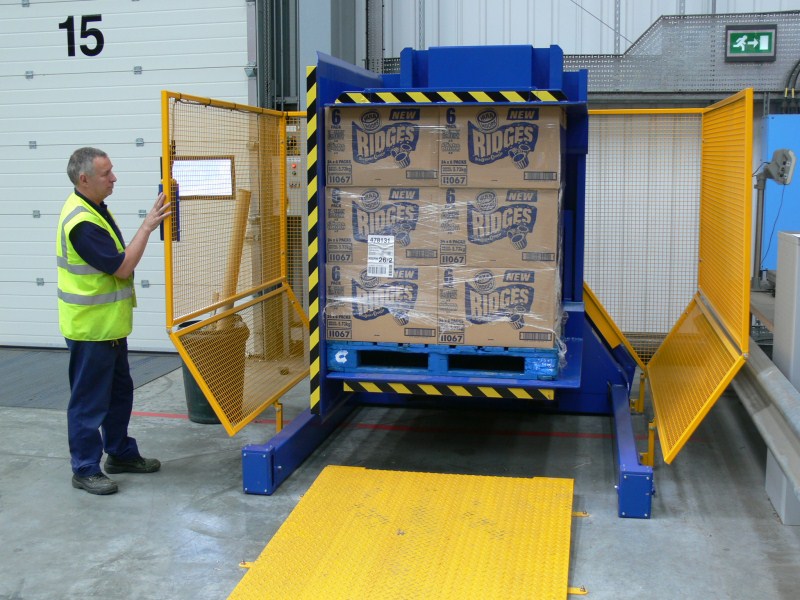
I've spent my entire career in the packaging and material handling industry. I've seen firsthand how a small bottleneck can bring a massive operation to a halt. You might think a pallet inverter is just a simple machine for flipping things over. But its real value is far deeper. It’s about protecting your product, your people, and your profits. Let's explore the specific reasons why this technology has become so critical for industries that rely on efficient and reliable exports.
How do pallet inverters directly reduce manual handling and associated risks?
Is your team still swapping pallets by hand? This process is often slow and physically demanding. It exposes your employees to significant risks of back injuries and strains. It also puts your valuable products at risk of being dropped or damaged during the awkward transfer. Every time a pallet is manually handled, you are betting on human strength and focus, which can waver at the end of a long shift. This leads to higher insurance costs, potential worker compensation claims, and lost revenue from damaged goods that cannot be sold.
A pallet inverter directly reduces these risks by taking the human element out of the heavy lifting. The machine securely clamps the entire load, rotates it safely, and allows the original pallet to be removed and replaced effortlessly. This automation eliminates the physical strain on workers, which is a leading cause of workplace injuries. It also provides a stable, controlled process that prevents the accidental drops and impacts that damage products during a manual transfer.
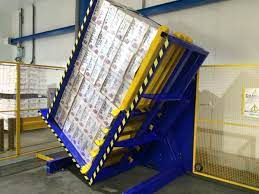
A Practical Look at Safety and Product Integrity
From my experience visiting countless factories, manual pallet swapping is one of the most inefficient and dangerous tasks on the floor. It often involves two or more workers, sometimes using pry bars and brute force to separate a heavy load from its pallet. This is a recipe for disaster. The most common injuries are related to the back and shoulders from lifting and twisting under load. These are not minor issues; they can lead to long-term health problems for your employees and significant financial liabilities for your company.
A pallet inverter transforms this process. A single operator can manage the entire cycle with the push of a button. The machine's clamping mechanism applies even, consistent pressure, securing the load far more effectively than human hands ever could. There's no awkward lifting or unstable balancing. This controlled environment is crucial, especially in the agri-export business where product integrity is paramount. A bruised bag of grain or a crushed box of fruit is a total loss. By mechanizing the transfer, you virtually eliminate the risk of this type of damage.
Let's break down the direct comparison:
| Feature | Manual Pallet Exchange | Pallet Inverter Exchange |
|---|---|---|
| Labor Required | 2-3 workers | 1 operator |
| Risk of Injury | High (back strain, repetitive motion) | Minimal (push-button operation) |
| Risk of Product Damage | Moderate to High (drops, impact, shifting) | Very Low (secure clamping, controlled rotation) |
| Process Time | 5-10 minutes per pallet | Less than 1 minute per pallet |
| Consistency | Variable, depends on workers' skill and fatigue | Highly consistent and repeatable |
The data is clear. Adopting a pallet inverter is not just an equipment upgrade; it's a fundamental improvement to your operational safety and quality control.
What is the impact of faster pallet exchange on overall plant throughput?
Does your production line ever have to slow down or stop because the packaging area can't keep up? You have invested heavily in high-speed processing and manufacturing equipment. But if there is a bottleneck at the very end of the line, the efficiency of your entire plant suffers. Every minute your production machinery sits idle, waiting for the shipping department to manually swap pallets, is a minute of lost productivity and lost revenue.
A faster pallet exchange process has a direct and significant positive impact on your plant's overall throughput. Pallet inverters can swap a pallet in less than 60 seconds, a task that might take a manual team 5 to 10 minutes. By eliminating this end-of-line bottleneck, you create a smooth, continuous flow of products from production to dispatch. This allows your primary production equipment to run closer to its maximum capacity, increasing the total volume of goods your plant can process and ship in a day.

From Bottleneck to High-Speed Channel
Think of your production facility as a multi-lane highway. Your processing and packaging lines are the main lanes, moving at high speed. The final pallet swapping station, if done manually, is like a single-lane toll booth with a human operator. Traffic inevitably backs up. Cars (your products) have to wait, and the entire highway slows down. An automated pallet inverter is like installing a modern, multi-lane electronic toll system. It processes traffic so quickly that there is no longer a slowdown. The flow is continuous.
Let's look at the numbers. A manual team that takes 6 minutes to swap a pallet can process, at most, 10 pallets per hour. A pallet inverter that takes 1 minute per cycle can process 60 pallets per hour. That is a 600% increase in capacity at that specific point. This doesn't just mean the last step is faster. It means the packaging line that feeds this station can run faster. The production line that feeds the packaging line can run faster. The impact ripples backward through your entire operation, boosting what we engineers call Overall Equipment Effectiveness (OEE). For a CEO or owner, this translates directly into higher capacity utilization and lower operating costs per unit, which are key goals for any industrial leader.
| Metric | Before Inverter (Manual) | After Inverter (Automated) | Impact on Throughput |
|---|---|---|---|
| Time per Pallet Swap | 5-10 minutes | < 60 seconds | Over 80% time reduction per pallet |
| Pallets per Hour (per station) | 6-12 | 60+ | 5x-10x increase in station capacity |
| Production Line Flow | Stop-and-Go, frequent pauses | Continuous, smooth flow | Increased overall plant output |
| Labor Allocation | 2-3 workers tied up in a bottleneck | 1 operator overseeing a smooth process | Labor can be re-assigned to value-added tasks |
This isn't just about speed. It's about creating a predictable, reliable, and efficient system that allows your entire investment in production to pay off.
How does adopting pallet inverters improve compliance with international export standards?
Have you ever had a valuable shipment delayed or rejected at a foreign port because of a simple pallet issue? International export is governed by a complex web of regulations. One of the most critical is the ISPM 15 standard, which dictates that all wood packaging material must be heat-treated or fumigated to prevent the spread of pests. Using a non-compliant pallet can result in costly fines, fumigation charges, or even the return of your entire shipment. The financial and reputational damage can be immense.
Adopting pallet inverters is one of the most effective ways to guarantee compliance with these strict international standards. It allows you to establish a simple and foolproof process: use durable, reusable, and often untreated wooden pallets for internal factory movements. Then, at the final shipping point, use the inverter to quickly and cleanly transfer your goods onto new, compliant, heat-treated or plastic export pallets. This act of changing the pallet becomes your final quality and compliance checkpoint, ensuring every shipment that leaves your facility meets the required phytosanitary standards.
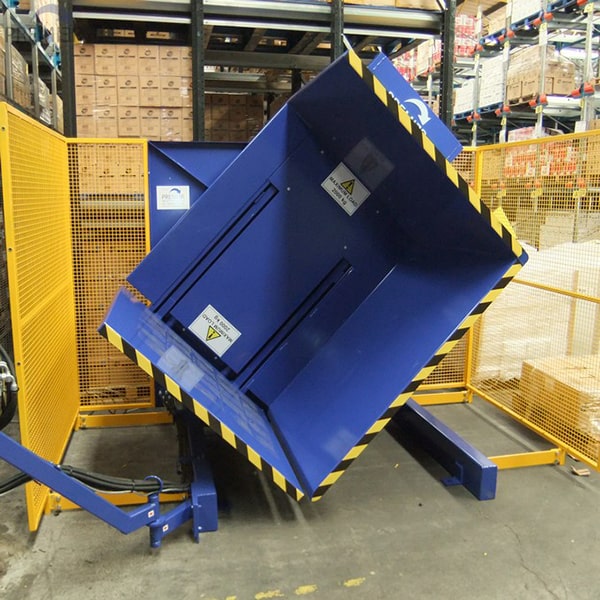
The Inverter as a Critical Compliance Gateway
Think of the pallet inverter not just as a piece of material handling equipment, but as a compliance gateway. It creates a clear separation between your internal pallet pool and your export pallet pool. This is a best practice I recommend to all my clients who export. Internally, you can use whatever pallet is most cost-effective and durable for the factory environment. These pallets might get damaged or dirty, which is fine for internal use but unacceptable for export.
When the finished product reaches the shipping dock, the inverter performs the crucial switch. The load is lifted off the rough "internal" pallet and placed onto a pristine, ISPM 15-stamped wooden pallet or a hygienic plastic pallet. This process ensures two things. First, you are meeting the legal requirements for export, avoiding customs issues. Second, you are presenting your product to your international customer in the best possible condition, on a clean and professional-looking pallet. I remember a client in the food ingredients business who faced this exact problem. A huge order to Europe was rejected because their wooden pallets were not properly stamped. It was a costly lesson. We installed a pallet inverter at their shipping bay, and the problem disappeared overnight. It became their final, non-negotiable step before any container was sealed.
| Compliance Challenge | Manual Solution (High Risk) | Pallet Inverter Solution (Low Risk) |
|---|---|---|
| ISPM 15 Compliance | Manually re-stacking goods onto new pallets; high risk of using wrong pallet | Automated transfer to a dedicated pool of export-only pallets |
| Pallet Hygiene | Risk of cross-contamination from dirty internal pallets to export goods | Clean separation; goods only touch the clean export pallet |
| Customer Requirements | Difficult to manage different pallets for different customers | Easy to switch to specific plastic, rental, or branded pallets as required |
| Process Control | Relies on worker training and memory | Systemized, machine-enforced process; impossible to ship on wrong pallet |
For any business, like Argentina's agri-exporters, where international reputation is everything, this level of control is not a luxury—it's a necessity.
Can pallet inverters integrate with existing automated warehouse systems?
You are likely pursuing a digital transformation strategy, investing in automation like conveyors, AGVs, or even a fully automated storage and retrieval system (ASRS). The last thing you want is a new piece of equipment that operates as a standalone "island of automation," requiring manual intervention that breaks your carefully designed automated workflow. This would create a new bottleneck and undermine your entire strategy.
Yes, absolutely. Modern pallet inverters are specifically designed for seamless integration into larger, automated systems. They are not just standalone machines; they are intelligent nodes in a logistics network. Equipped with their own PLC (Programmable Logic Controller), they can communicate with your central Warehouse Management System (WMS) or MES. They can be built with in-feed and out-feed conveyors to receive loads from AGVs or conveyor lines and then discharge them back into the automated system after the pallet exchange is complete.
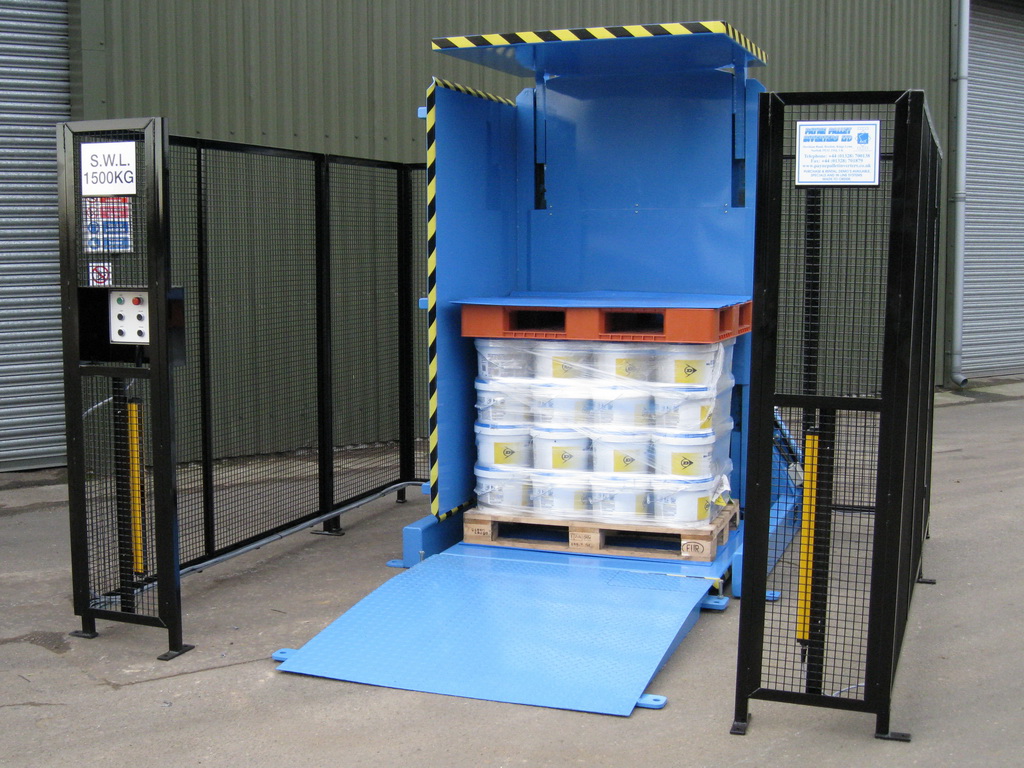
Building a Truly "Hands-Free" Workflow
The key to successful integration lies in communication and physical compatibility. Let's walk through a fully automated scenario. Your WMS instructs an AGV to retrieve a pallet of finished goods. The AGV transports the pallet and places it on the in-feed conveyor of the pallet inverter. Sensors confirm the pallet is in position. The inverter then communicates with the WMS to confirm the product identity and determine which type of export pallet is needed. The WMS gives the command, and the inverter performs the swap automatically.
Once the cycle is complete, the inverter sends a "task complete" signal back to the WMS. The WMS then dispatches another AGV to pick up the now export-ready pallet from the out-feed conveyor and transport it to the container loading area. Safety features like light curtains ensure that the entire process is safe, pausing the machine instantly if a person or vehicle enters the operating zone. This creates a true, "hands-free" workflow that directly supports goals like digitalization and reducing operational costs. For a forward-thinking leader like Javier Morales in the steel industry, this is not just about efficiency; it's about building the factory of the future, where data and automation drive every decision and action, from raw material to final shipment.
| Integration Feature | Description | Benefit |
|---|---|---|
| PLC Control | The onboard "brain" of the inverter that executes commands and communicates. | Allows for complex, automated sequences and communication with other systems. |
| Conveyor Compatibility | Inverters can be built with integrated chain or roller conveyors. | Enables direct, physical connection to existing conveyor lines for a seamless flow. |
| WMS/MES Communication | Can send and receive signals (e.g., "pallet ready," "cycle complete"). | Becomes an intelligent part of your factory's data ecosystem. |
| Safety Systems | Light curtains, safety cages, and sensors. | Ensures safe operation alongside human workers and other automated vehicles like AGVs. |
An integrable pallet inverter is a strategic asset that enhances, rather than disrupts, your investment in automation.
My Insight as an Engineer and Factory Owner
Throughout my journey, from working on the factory floor to building my own company, I've learned a crucial lesson. We often focus our attention and investment on the core production machines—the equipment that makes the product. We want faster speeds and higher output. But I discovered that a world-class production line is useless if the final steps—packaging and shipping—are inefficient and unreliable.
I see this pattern everywhere. A factory can create a perfect product, but if that product gets damaged in the last 50 meters of the plant, or if a shipment is rejected due to a simple pallet error, all the value created upstream is lost. The end of your line is not a cost center; it is your last chance to protect your quality, your reputation, and your profit.
For leaders in demanding industries, whether it's agri-export in Argentina or steel production in Mexico, the principle is the same. A machine like a pallet inverter is more than just a piece of hardware. It represents a shift in thinking. It’s a tool for managing risk. It’s a quality control checkpoint. It is a critical enabler of the automation that drives down costs and increases capacity. By securing this final step in your process, you protect the entire investment you have made in your business. This is the core of our "TOTAL SOLUTION" philosophy at SHJLPACK.
Conclusion
Pallet inverters are a strategic investment for industries like Argentina's agri-exporters. They cut downtime, boost throughput, and ensure compliance. These same powerful benefits apply to any industrial leader seeking efficiency.



